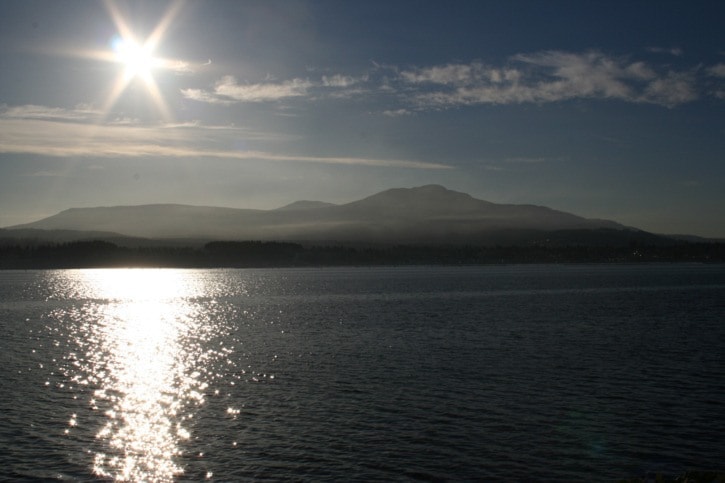A central Island environmental organization wants Nanaimo to seize the opportunity and brand itself as the Green Gateway to Vancouver Island.
Laurie Gourlay, president of the Mid-Island Sustainability and Stewardship Initiative, said the organization is hoping the community embraces its unique location as a hub for coastal recreation.
“What are we doing with the natural spaces and green areas that are huge attractions to people,” he asked. “Why don’t we pay more attention to marketing them?”
Branding the area as the Green Gateway would be a first step in acknowledging the important green spaces in the mid-Island and help establish the area as a prominent provincial, national and global eco-tourism destination, he added. Then once the area starts to become known as the Green Gateway and that brand brings more awareness to the importance of protecting mid-Island communities could work toward a the larger vision of sustainable development and conservation of environmental areas.
“We are living in a great place, but you need to protect that great place,” said Gourlay, adding government and community organizations can work together to create a formal system that respects nature and works with it.
Three natural areas would serve as the foundation for the Green Gateway: the Mount Arrowsmith Biosphere Reserve, the Nanaimo River Watershed and the National Marine Conservation Area for the Georgia Strait.
MISSI has been pushing to have the marine conservation area expanded to include the Nanaimo Estuary and has appealed to the Islands Trust to stand behind its position. However, the Islands Trust already pushed hard in 2005 to have Gabriola Pass included in the reserve, which was successful. Sheila Malcolmson, chairwoman of the Islands Trust, previously told the News Bulletin that the Islands Trust was happy that the federal government extended the border and didn’t want to delay the creation of the marine conservation area by asking for the inclusion of more territory.
Gail Adrienne, executive director of the Nanaimo and Area Land Trust, said the organization would be pleased if an extension of conservation area meant more protection for the Nanaimo Estuary, but so many jurisdictions and factors that need to be considered, she added.
“The politics of it is way beyond our jurisdiction,” said Adrienne. “It really is in the hands of the province, the federal government, port authority and the city."
Adrienne said NALT doesn’t have an official position on the creation of a Green Gateway – the organization’s focus is on the protecting the Nanaimo River.
Gourlay said ecosystems aren’t confined at municipal, provincial and federal boundaries but overlap and an issue occurring in the Nanaimo River Estuary could affect Georgia Strait.
MISSI is also concerned about the possibility of the Mount Arrowsmith Biosphere Reserve losing its designation as a United Nations Educational, Scientific and Cultural Organization status. There are 15 UNESCO biospheres in Canada and two in B.C. Last year a report by the Canadian Commission for UNESCO found that the Mt. Arrowsmith reserve wasn’t meeting the framework criteria established for biosphere reserves. If the Mt. Arrowsmith Reserve Foundation doesn’t come up with a strategy and action plan by 2013 that UNESCO finds acceptable it will lose its designation. If that happens it would become the only biosphere in Canada to have its designation taken away.
Biosphere reserves were created to promote and demonstrate sustainable development based on local community efforts to help reconcile conservation and cultural diversity with economic development by creating partnerships.
Dominique Potvin, a natural scientist for the Canadian Commission for UNESCO, said the foundation has until January to submit a progress report. She said each biosphere’s governing structure is unique in Canada. Earlier this summer MISSI had offered to take over governance of the biosphere but withdrew its offer after speaking to the foundation board because it’s waiting to see the foundation’s strategy, said Gourlay.
Gourlay also said it’s important for people to see “incremental destruction” – development that happens in small sections throughout the mid-Island. He said steps need to be taken before those small development projects begin to add up and then down the road a few years people realize the natural spaces they enjoyed years ago no longer exist.
reporter3@nanaimobulletin.com
